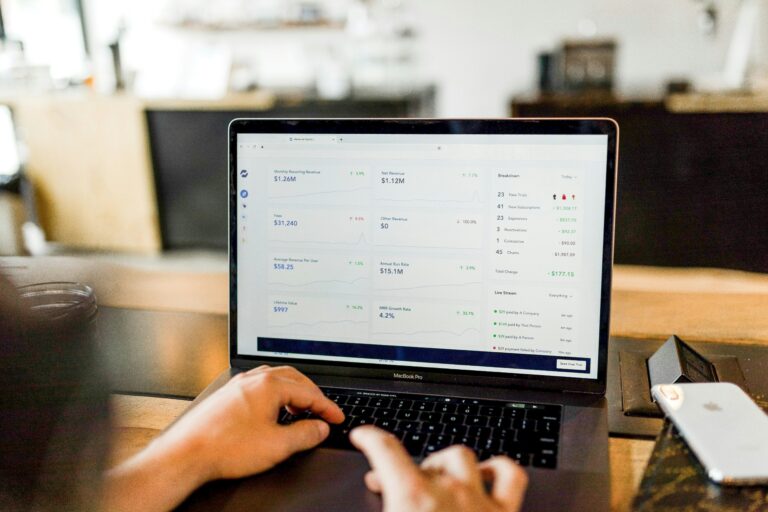You don’t need a finance degree or six-figure salary to start investing—but you do need to avoid the traps that trip up most beginners.
ETFs are often marketed as the easiest way to “get in the market,” and while they are powerful tools, they’re not foolproof. One wrong click, one overlooked detail, and your early investing decisions can cost you more than just a few bucks—they can chip away at your confidence.
If you’ve ever wondered, “Am I doing this right?” or hesitated to make that first purchase out of fear you’ll mess it up… you’re not alone. That self-doubt is common. But here’s the truth: most people don’t mess up because they’re lazy. They mess up because no one showed them what to watch out for.
This article is your safety net. We’ll break down the most common beginner ETF mistakes—clearly, honestly, and without the jargon. So you can start strong, invest smarter, and avoid the regret later. Let’s begin.
1. Not Understanding What an ETF Actually Is
An ETF, or Exchange-Traded Fund, is basically a basket of investments—usually stocks or bonds—that you can buy and sell like a single stock. Instead of owning one company, you own tiny pieces of many.
Think of it like a smoothie: instead of picking just bananas or just strawberries, you’re blending several fruits together for a more balanced mix.
Sounds simple, right? It is. But where beginners get tripped up is assuming all ETFs are the same. Some track the entire market. Others follow specific sectors, themes, or even obscure strategies. Some are built for long-term holding. Others are speculative or even downright risky.
Before you buy, ask: What’s inside this ETF? What index does it track? What companies or assets does it hold? If you don’t understand what you’re investing in, you’re not really investing—you’re guessing.
2. Overlooking the Fees (Even the Tiny Ones)
One of the biggest selling points of ETFs is that they’re low-cost. But low-cost doesn’t mean free.
Every ETF charges an “expense ratio”—a small annual fee expressed as a percentage of your investment. A 0.05% fee on $10,000 might sound like nothing, but over years of compounding, that adds up.
Even more important? Trading costs. Some platforms charge commissions. Others don’t. And if you’re buying international ETFs or currency-hedged versions, the costs can sneak up on you.
Here’s what to do: Before you buy, check the expense ratio, compare similar ETFs, and be wary of anything with fees above 0.5% unless it offers something very specific. Your future self will thank you for caring about the “small stuff.”
3. Buying ETFs Without a Clear Goal or Strategy
Too many new investors treat ETFs like lottery tickets. They pick what’s trending, or what a friend mentioned, without thinking about why they’re investing in the first place.
Are you looking for long-term growth? Passive income? A specific industry or region exposure? Without a goal, you can’t know if an ETF fits into your plan—or if you even have a plan.
Let’s say your goal is to retire in 30 years. A broad-market ETF might make sense. But if you’re saving for a down payment in two years? That same ETF might expose you to too much volatility.
Use this question to guide you: What am I trying to achieve—and when will I need the money?
Your ETF choices should reflect your timeline, risk tolerance, and overall strategy—not just what’s popular on Reddit this week.
4. Assuming All ETFs Are Low-Risk
Here’s a dangerous myth: “ETFs are safer than stocks.”
Some are. But others? They’re more volatile than any individual stock you could buy.
There are ETFs that double down on specific industries (like tech or cannabis). There are “leveraged ETFs” that aim to double or triple the daily return of an index. And then there are thematic ETFs—narrow bets on ideas like space tourism or cryptocurrency infrastructure.
While these may sound exciting, they carry far more risk than broad-market ETFs. If you don’t understand the structure or what it holds, you could be blindsided by losses.
So before buying, check: Is this ETF diversified? Is it using leverage? Is it tied to a trend or fad? Just because it’s labeled “ETF” doesn’t make it safe.
5. Focusing Too Much on Short-Term Performance
We’ve all seen the headlines: “This ETF is up 60% this year!” And sure, it’s tempting to chase the hottest performer. But this is where beginners get burned.
Short-term spikes often come with long-term consequences. Many of those surging ETFs are concentrated in one sector or built to capture momentum—not to last.
Instead of chasing past winners, focus on consistency. Look for ETFs with solid long-term track records, low fees, and exposure that aligns with your goals.
One strategy that works well? Dollar-cost averaging. That means investing a fixed amount regularly—whether prices are up or down. Over time, you’ll buy more shares when prices are low and fewer when they’re high, reducing your average cost.
ETFs aren’t about overnight gains. They’re about building wealth, brick by brick.
6. Ignoring Tax Implications and Account Types
Here’s a curveball most new investors don’t see coming: taxes.
Where you hold your ETF matters. If you’re in Canada, putting a U.S. dividend-paying ETF in your TFSA could mean unnecessary withholding taxes. If you’re in the U.S., capital gains taxes might apply when you sell—even if your ETF paid no dividends.
The account you choose—RRSP, TFSA, Roth IRA, brokerage—can significantly affect your after-tax returns.
To avoid surprises:
- TFSAs (Canada) are great for growth ETFs without foreign income.
- RRSPs (Canada) can shelter U.S. dividends if the ETF is U.S.-listed.
- Roth IRAs (U.S.) allow tax-free growth—but contributions are limited.
- Taxable accounts work best for tax-efficient ETFs (like those with low turnover or Canadian equity ETFs for Canadian investors).
If you’re not sure, talk to a tax professional or use a reputable ETF screener with tax filters.
7. Waiting Too Long to Start
This might be the biggest mistake of all—waiting.
Waiting until you “know everything.” Waiting until the market “feels right.” Waiting until you have more money.
But here’s the truth: time in the market is far more powerful than perfect timing. Every year you wait is a year of lost compound growth.
You don’t need $5,000 to start. Many platforms now let you invest with $50 or even less. And you don’t need to get everything right the first time. You just need to begin.
Start with one ETF. One small investment. One step toward confidence.
And remember: The best investors aren’t perfect. They’re just consistent.
Moving Forward With Confidence
Maybe you’ve been second-guessing every decision, worried about messing this up. Maybe all the terminology—expense ratios, leverage, tax implications—feels overwhelming. That’s normal.
But look how far you’ve come already. You’ve learned what ETFs really are, what fees matter, how to match investments to your goals, and how to avoid the riskiest traps. You’ve got a map now.
Investing isn’t about being fearless—it’s about being informed. You don’t have to know everything. You just need to know enough to start. And you do.
So take the next step. Choose your first ETF—or review the one you already own. Open that account. Set up an automatic deposit. Let this be the beginning of a steady, confident, lifelong habit.
Because every smart investor starts out unsure. But they don’t stay there.
We’d Love to Hear From You
- What’s one thing that’s been holding you back from investing in ETFs?
Share your story in the comments — your insight might be exactly what someone else needs to keep going.





Leave a Reply